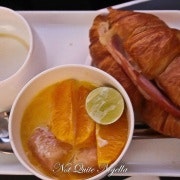Hot for all the tea in China
The bus rumbles along, sharing the road with a herd of slow moving cattle. We cross a stone bridge and a mother hanging up the washing looks out from the distance from her backyard with two babies clinging tightly to her. Another woman tends to a wok at her street side eatery. Welcome to a tea pilgrimage in China’s Yunnan province.
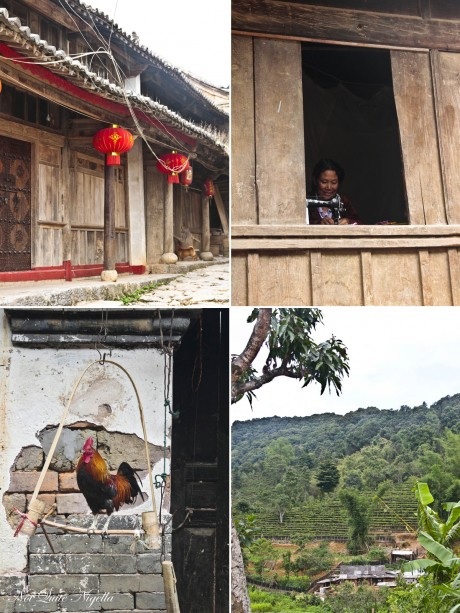
Tea is as fundamental to Chinese culture as food and each region of China grows its own type of tea. In Yunnan, Puer tea is the predominant type of tea grown. It’s one of the most sought after teas commanding some of the highest prices in the world. Tea can be freshly harvested and dried or it can be aged-much like wine, the older the tea, the more expensive.
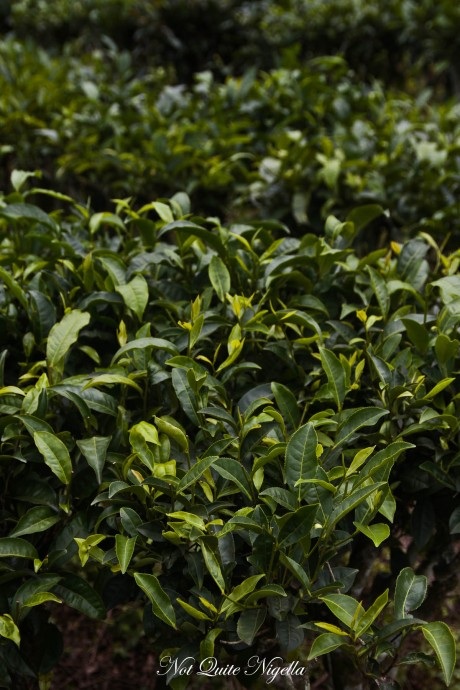
In the tea ceremony, the tea pet is usually in ten shape of an animal – commonly frogs or dragons are used and the tea or water is poured over them. Fermented tea produces a different result than unfermented. Indeed, if you pick up a brick of fermented tea it is hard to detect an aroma but bringing the unfermented tea brings a range of rich aromas. We are shown a special unfermented tea, not a Puer but its lovely with a distinct apricot aroma to it.
Like wine, some teas are made to age. Fermented tea is set drunk straight away whereas unfermented can be aged and develops flavour over time whereas fermented remains unchanged. Fermented tea is also uniformly dark so it is often used to mask lesser quality teas. Generally the more lighter tips the better the tea and this can only be seen in an unfermented tea.
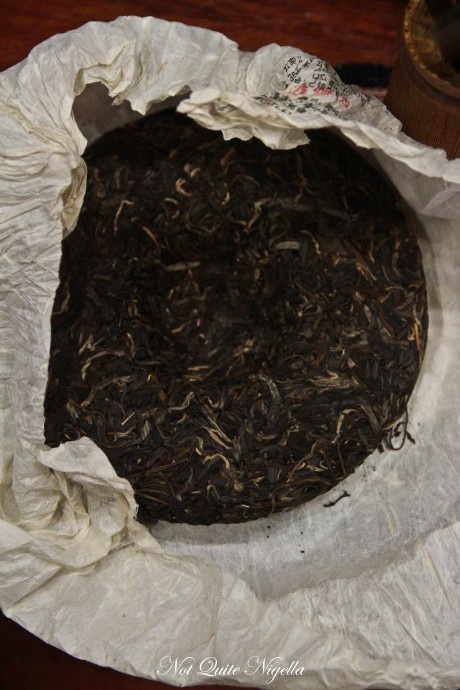
Other factors determine tea price and one of the largest factors is the tree from which it came. There are three types of trees, the first being the terraced tea trees that use fertiliser-these produce mass teas. These are picked every week because the leaves grow so quickly because of the fertiliser. The second type of tea tree is the taller, ancient tea tree that rises high above the ground away from pesticides and fertiliser. These are picked every 10-12 days as they grow slower than the terraced trees and these command the highest prices. These ancient trees make up a small percentage of all Puer trees (some guestimate around 15 per cent). The third type of tree is a small bush that isn’t terraced and sits somewhere between the two in price.
We visit a tea store where large round trays of tea dry in the sun, a playing card indicating where and when the tea was picked. Enormous trays of tea sit drying on roofs.
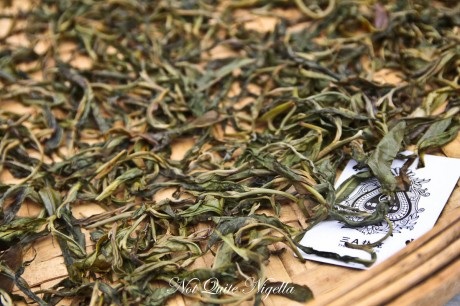
At a six generation tea shop, a man takes out eight small glass cups and fills a small bone china cup with five grams of tea that has been aged for three to four years. He places the lid on and discards the first pouring as the leaves are considered too dry and then repeats the process filling everyone’s cups with the hot liquid. The third or fourth pours are said to be the best for flavour.
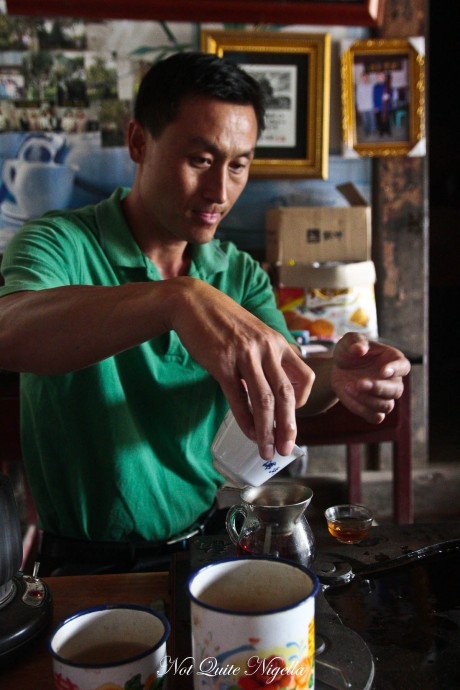
He shows us the various ways that they package the teas. There are long bricks of tea which were most commonly used in ancient times along the ancient tea route as they were easy to pack. Then there are the wrapped tea cakes or bing which are packaged in a set of seven. Each cake weight 357 grams and each cake sells for Y400/$68AUD with the prices of the entire package being Y2800 or $477. Other shapes have the name of the seller embossed on top.
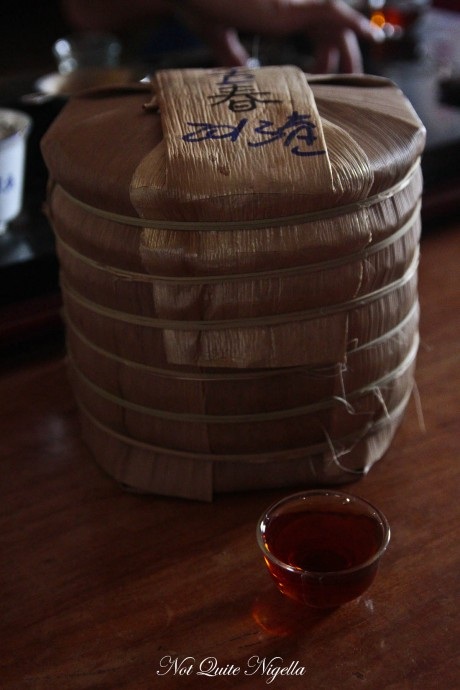
Our next leg of our tea journey takes us to visit the Old Road where hundreds of years ago horse pulled caravans laden with tea took the route from Yunnan to Tibet to sell their Puer tea. Anapa our guide explains that it was often a dangerous job and there would often take twelve horses carrying the tea and if they made it there they would be rewarded with a horse of their own. The people leading the horses would feed the horse first as a sign of respect to the animal and then prepare their own food.
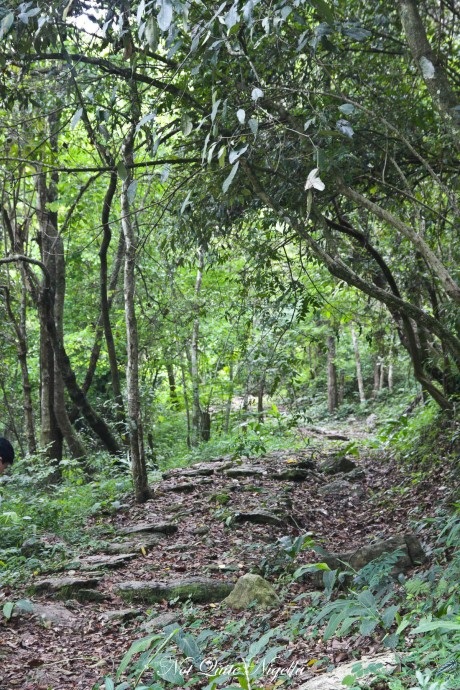
Our very last stop is at one of China’s oldest tea trees, dated at 1000 years old. The tree itself is protected by padlocks and a cage to deter people from climbing the tree. Anapa tells us that it’s an important tree because it shows the world that China had tea trees before Sri Lanka and India.
Read about the rest of Not Quite Nigella's journey here...

